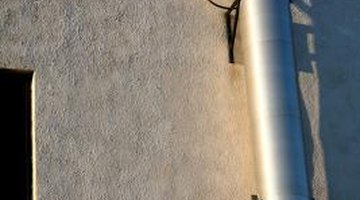HVAC Chiller Plant Vs. Rooftop
HVAC stands for heating, venting and air conditioning. When it comes to the cooling portion of the system, large commercial buildings have two major options -- chillers and rooftop units. There is some overlap involved, such as chiller plants being located on rooftops, for example. In general, however, rooftop units are a broader category that includes a variety of cooling methods while chiller plants are a specific type of cooling that may not be ideal for every building.
Chiller Plants

Chiller plants are units that use chilled water to cool large buildings. They also have ventilators and fan coils, but water instead of refrigerant is the primary method for transferring heat out of the building as quickly as possible. Chiller plants can be air cooled or water cooled, based on the set-up. Air cooling tends to be more efficient, but requires a large amount of space and it may be more efficient to use water cooling in some situations.
Advantages
Chiller plants can be a very large power draw, but when they are installed and maintained correctly they can also help businesses save money through effective air conditioning. Water does not cost as much as refrigerant and is easy to pump and manage, which makes repairs and components less costly. Also, an entire chiller plant is typically prepackaged with all necessary parts and installation is often included, making the project very simple.
Rooftop Units
Rooftop HVAC units are simply air conditioning units that are located on the top of the roof. Cooling towers may be located on top of business roofs for chiller units, but even traditional air conditioners need to have evaporators located outside. Large banks of evaporators may be required for bigger buildings. Unitary equipment with smaller stations is more suitable for lighter construction and smaller buildings.
Advantages
Rooftop units are often very advantageous when a building is first being constructed, because they help save space needed on and around the building for other purposes. In addition to space-saving considerations, rooftop systems can also come with economizer sections that help save energy, as well as advanced modulation controls. They can be combined with heating systems like gas heating. However, rooftop maintenance is more difficult and requires a reliable contractor to clean and regularly inspect the system for optimal performance.
References
Writer Bio
Tyler Lacoma has worked as a writer and editor for several years after graduating from George Fox University with a degree in business management and writing/literature. He works on business and technology topics for clients such as Obsessable, EBSCO, Drop.io, The TAC Group, Anaxos, Dynamic Page Solutions and others, specializing in ecology, marketing and modern trends.
Photo Credits
- Jupiterimages/Photos.com/Getty Images
More Articles



